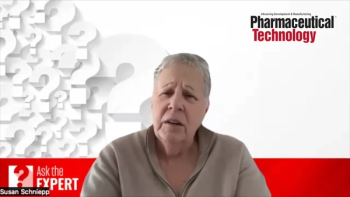
- BioPharm International July August 2025
- Volume 38
- Issue 6
- Pages: 5
Next for Biopharma: Speed, Strategy, and Smarter Systems
Biopharma’s future depends on seamless integration of technology, expertise, and strategy.
In today’s rapidly shifting biopharmaceutical landscape, the ability to adapt, accelerate, and innovate is no longer aspirational; it’s essential. The articles featured in this issue collectively spotlight how the sector is evolving under growing pressure to deliver safe, effective therapies faster and more efficiently.
Our cover story, “Time-to-Market Pressures Are Influencing Downstream Processing Innovations,” underscores how biopharma companies are reengineering downstream processes to reduce bottlenecks. As Cynthia A. Challener illustrates, the integration of advanced purification and monitoring technologies is not only shortening development timelines but also enhancing quality and consistency, two non-negotiables in a competitive, patient-driven market.
On the upstream side, single-use systems continue to transform the industry’s infrastructure. Chris Chen, CEO of WuXi Biologics, details how next-generation platforms are boosting flexibility, minimizing contamination risks, and reducing the environmental burden of traditional stainless-steel operations.
That same spirit of adaptability is echoed in “Flexibility and Sustainability Driving Evolution in Equipment.” Patrick Lavery outlines how CDMOs and manufacturers are leveraging digital tools and smart design to meet rising demand for customized, low-volume production.
Predictive modeling is another crucial tool in this transformation. We delve into how advanced pharmacokinetic/pharmacodynamic modeling is refining decision making across all stages of drug development. By using artificial intelligence-driven simulations, teams can anticipate biological responses earlier, reducing trial-and-error experimentation and improving patient safety.
Meanwhile, outsourcing continues to gain momentum across the bioprocessing spectrum. In “Outsourcing Hits Record Levels for All Bioprocess Platforms,” Yasmin Timol captures a clear industry trend: organizations are increasingly turning to external partners for everything from fill/finish to cell therapy production.
Regulatory agility remains a challenge. In our “Ask the Expert” column, Siegfried Schmitt, PhD, critiques the sluggish adoption of ICH Q12’s Post-Approval Change Management Protocol. Without streamlined regulatory pathways, even the most innovative processes risk being stalled at critical junctures.
The takeaway is clear: biopharma’s future depends on seamless integration of technology, expertise, and strategy. As always, we’re here to bring you the insights shaping that future.
About the author
Mike Hennessy Jr is Chairman and CEO of MJH Life Sciences®.
Article details
BioPharm International®
Vol. 38, No. 6
July/August 2025
Page: 5
Citation
When referring to this article, please cite it as Hennessy, M. Next for Biopharma: Speed, Strategy, and Smarter Systems. BioPharm International 2025 38 (6).
Articles in this issue
Newsletter
Stay at the forefront of biopharmaceutical innovation—subscribe to BioPharm International for expert insights on drug development, manufacturing, compliance, and more.




